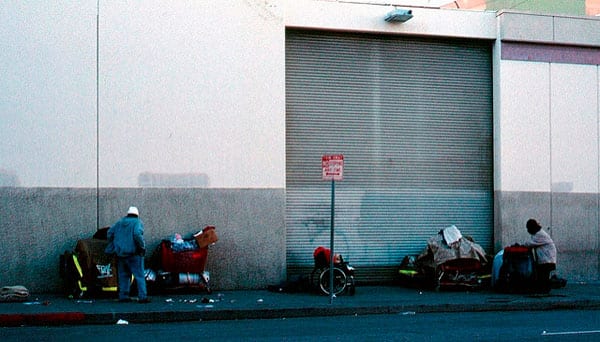
February 10, 2019; Truthout
In some California cities, where housing is scarce and affordable housing almost nonexistent, there is a movement to keep the streets, parks, and underpasses free of those who have no place to live. The effort is couched in kind words and would seem to center the “best interests” of those who are homeless, poor, or disabled. But if one digs beneath the surface of the conservatorship program, one hears echoes of the chant, “Lock them up!”
As Toshio Meronek and Tory Becker, writing for Truthout, define it:
Conservatorship, also known as “guardianship,” puts decision-making for “conserved” people in the hands of strangers who are assigned to them by the courts, or sometimes in the hands of relatives with whom they may or may not have good relationships. The process takes away their self-determination and often leaves them locked up in jail-like facilities, allegedly for their own protection.
The program has cleared out encampments and tenting areas that sheltered homeless people in San Francisco and moved others with serious disabilities or substance abuse issues into state-run institutions. This has led to an outcry from the civil rights community. Susan Mizner, a lawyer in San Francisco who previously headed up the San Francisco government’s Office on Disability, called “conservatorship the biggest deprivation of civil rights aside from the death penalty.”
What happens to those who are removed? Can they expect the treatment and services that they were not getting while living on the streets? If the history of conservatorship in California serves as any guide, the answer to these questions is likely “no.”
Sign up for our free newsletters
Subscribe to NPQ's newsletters to have our top stories delivered directly to your inbox.
By signing up, you agree to our privacy policy and terms of use, and to receive messages from NPQ and our partners.
Back in 1959, over 36,000 Californians were held involuntarily in state-run institutions, some for their entire lives. Meanwhile, in California, treatments included forced sterilization, barbaric treatments such as lobotomies and prison-like environments that have inspired many horror films. The work of disability justice activists in the 1970s helped to liberate disabled people from asylums and allowed them greater self-determination. But after California closed down many of these institutions, there was one big problem, according to the Coalition: “promised community-based services and housing never materialized.”
SB 1045, which passed and was signed into law in California in 2018, contains no guarantee of food, clothes, housing, or healthcare. Even considering only the homeless and low-income people of San Francisco, options remain dismal. The waitlist for public housing was closed in 2015 and includes more than 8,000 people. Five hundred people are requesting substance abuse treatment that is not available. What happens if space in mental health facilities and homeless shelters fills up and there is nowhere to place people.
Are state prisons the next option? Some groups are concerned that laws like SB 1045 may expand the prison-industrial complex. We could be seeing medical jail wards and “mental health services” being provided within incarceration facilities as the best way to deal with our homeless, disabled populations.
This week, California’s Governor Gavin Newsom appointed Sacramento mayor Darrell Steinberg to head a commission on homelessness. Calling it a “homelessness epidemic,” the governor committed additional funds (beyond the state budget funding) for prevention, mental health, housing, and shelters.
“There’s an important time where people go from fragile and housed to fragile and un-housed. We need to focus on that point in time for people and make sure that people who have housing don’t lose it,” Steinberg said.
This sounds great, but it still leaves approximately 134,278 homeless people in California who might want or need services but are not ready to surrender their rights to self-determination or spend months or years in institutional (or even prison-like) settings. California is not the only state struggling with this. Perhaps what’s called for is some shared problem solving and solutions, rather than resurrecting past initiatives that have not worked.—Carole Levine













